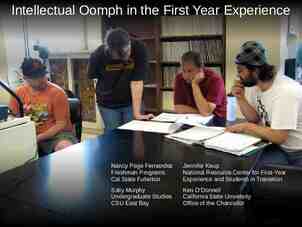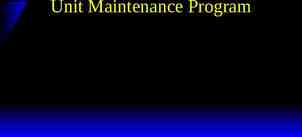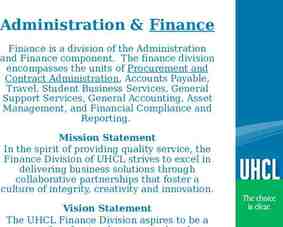Lesson 2: Health Care Team Collaboration Module 7: Enhancing Practice
37 Slides679.61 KB
Lesson 2: Health Care Team Collaboration Module 7: Enhancing Practice Oncology Patient Navigator Training: The Fundamentals
Acknowledgments This work was supported by Cooperative Agreement #1U38DP004972-02 from the Centers for Disease Control and Prevention. Its contents are solely the responsibility of the authors and do not necessarily represent the official views of the Centers for Disease Control and Prevention. Portions of this lesson have been adapted with permission from the Patient Navigator Training Collaborative of the Colorado School of Public Health. We would like to thank: The GW Clinical Learning and Simulation Skills (CLASS) Center for providing space to film video simulations for this lesson. Actors in the simulation videos: Thelma D. Jones (patient navigator) and Brittney Stretsbery (dietitian).
Competencies 4.5 Communicate effectively with navigator colleagues, health professionals and health related agencies to promote patient navigation services and leverage community resources to assist patients. 6.1 Support a smooth transition of patients across screening, diagnosis, active treatment, survivorship and/or end-of-life, working with the patient’s clinical team. 7.1 Work with other health professionals to establish and maintain a climate of mutual respect, dignity, ethical integrity and trust 7.3 Participate in interpersonal teams to provide patient-and population-centered care that is safe, timely, efficient and equitable.
Learning Objectives Work in cooperation with those who receive care, those who provide care, and others who contribute to or support the delivery of prevention and health services to forge interdependent relationships to improve care and advance learning Contribute to a positive working atmosphere Identify potential barriers to a smooth transition of patients across screening, diagnosis, active treatment, survivorship and/or end-of-life care, working with the patient’s clinical team Describe how culture, background, religious beliefs and attitudes impact patient care and the working environment Solve conflicts and enable a constructive negotiation in a healthcare team
Health Care Professionals Doctors Therapists & Rehabilitatio n specialists Mid-level providers Patient Technologist s& Technicians Nurses Pharmacists Patient navigators
Teamwork Teams are two or more people working together (collaborating) to accomplish a common goal. Source: Clements, n.d.
Types of Teams Interprofessional Teams Multidisciplinary Teams Source: Mitchell et al., 2010.
Characteristics of Effective Teams Trust Respect Collaboration Source: O’Daniel et al., 2008.
What Prevents Interprofessional Teamwork in Health Care? Work in silos Struggle with communicating with “In-group” and “Outgroup” others of different disciplines Source: Mitchell et al., 2010.
Impact of Dysfunctional Teams Low job satisfaction among staff Increased conflicts between health care professionals Waste of resources Fragmented or duplicated care Poor outcomes for patients Poor work environment Source: Mitchell et al., 2010; Lee et al., 2010.
Collaborative Work Environment Diverse teams that share knowledge High quality health care Patient-focused Increase in job satisfaction Offers effective clinical care Decrease in staff turnover Improved patient Reduction of health care costs outcomes Source: Mitchell et al., 2010; Lee et al., 2010.
Video Click here to watch the video
Collaborative Work Environment Helps establish relationship Encourages patients to use other members of the health care team Helps health care colleagues by providing resources and informing them about the patient’s specific needs and preferences for care
Barriers to Team Collaboration It takes time Perceived loss of autonomy Lack of trust Clashing perceptions/approaches Territorialism Lack of awareness Source: O’Daniel et al., 2008.
Barriers to Team Transition Transition between patient navigators Medical insurance issues Patient’s lack of understanding of next steps: Diagnosis Survivorship End-of-Life
Supporting a Smooth Care Transition Barriers Solutions Confusion about who continues with care Identify who gets the handoff Team members may be misinformed about next steps Ensure that everyone knows about the transition Patient may feel that the support system is shrinking Continue to advocate for the patient
Components of Successful Teamwork Non-punitive environment Clear direction Clear and know roles and tasks Respectful atmosphere Shared responsibility Acknowledgement and processing of conflict Clear specifications regarding authority and accountability Clear and known decision-making procedures Source: O’Daniel et al., 2008.
Case Study You are asked to be on a committee to help your institution meet the Commission on Cancer Survivorship standard. Your role is to advocate for a process that is patient-centered. You are asked to help identify patients who have completed treatment and should get a survivorship care plan.
Scenarios: Diversity in the Workplace Immediate surgery Eye contact Medicaid Source: Galanti, n.d.; Jeffreys, 2008.
Diversity on Health Care Teams Better working environments Better problem solving Bridge the gap between clinical and cultural knowledge Informed about patient environment Learning about differences can mitigate conflicts from cultural differences Source: Dreachslin et al, 2000; Roth et al., 2012; Shaw-Taylor et al., 1998 .
Barriers to Effective Communication Personal values and expectations Differences in schedules and professional routines Personality differences Varying levels of preparation, qualifications and status Hierarchy Differences in requirements, regulations and norms of professional education Disruptive behavior Fears of diluted professional identity Culture and ethnicity Differences in accountability, payment and rewards Generational differences Concerns regarding clinical responsibility Gender Complexity of care Historical interprofessional and intraprofessional rivalries Emphasis on rapid decision-making Differences in language and jargon O’Daniel et al., 2008.
Solutions for Effective Communication Foster a culture of common purpose, intent, trust, respect and collaboration Start with common goal high quality patient care Be self-aware of personal biases and beliefs Source: O’Daniel et al., 2008.
Understanding Conflict To understand conflict you must have: At least 2 parties To understand conflict you must have: Parties be interdependent (need At least must 2 parties other) each Parties must be interdependent (need Perceived incompatible goals each other) Perceived scare resources incompatible goals Perceived interference scare resources Perceived interference
Examples of Conflict in the Workplace Patient needs not factored by doctor Lack of clarity around who is responsible Needing help from another team member Who will work with the patient Supervisor Dealing with different departments Outside organizations
Resolving Conflict Work at talking about the issues Check perceptions Recognize the value of the conflict Use competent communication techniques Recognize conflict is a spiral and Agree to disagree and you can change the direction of Attack the problem, not the the spiral person Emphasize common goals
Methods for Solving Conflict SBAR Walk in the Woods
SBAR Method Situation “What is going on with the patient?” Background “What is the context?” Assessment “What do you think the problem is?” Recommendatio “What would you do to n correct the problem?” Source: O’Daniel et al., 2008.
Walk in the Woods Step 1 Step 2 Step 3 Step 4 Self-Interests Enlarged Interests Enlightened Interests Aligned Interests Source: Marcus, 2002; Marcus et al., 2012.
Step One: Self Interest Define the problem Who has a stake in the problem or who has a say and who will be impacted by the outcome? Source: Marcus, 2002; Marcus et al., 2012.
Step Two: Enlarged Interests Identify What everyone agrees on to reframe the problem What everyone agrees on Source: Marcus, 2002; Marcus et al., 2012.
Step Three: Enlightened Interests All parties freely brainstorm new and creative ideas to solve the problem. Rank solutions as follows: Unanimous agreement Ambiguity Clear disagreement Marcus, 2002; Marcus et al., 2012.
Step Four: Aligned Interests Parties share what they “must, want and would like to receive,” and what they are “eager, willing and unwilling to give” in the deal Discuss what they will and will not commit to, how they will meet their objectives and what are the implications for the proposed deal Agreement should be written down Each party should gain something out of the deal Source: Marcus, 2002; Marcus et al., 2012.
Success “If I succeed, you succeed; and if you succeed, I succeed. Therefore, let’s work toward achieving mutual success.” Source: Marcus, 2002; Marcus et al., 2012.
Conclusion In this lesson you learned to: Work in cooperation with those who receive care, those who provide care, and others who contribute to or support the delivery of prevention and health services to forge interdependent relationships to improve care and advance learning Contribute to a positive working atmosphere Identify potential barriers to a smooth transition of patients across screening, diagnosis, active treatment, survivorship and/or end-of-life care, working with the patient’s clinical team Describe how culture, background, religious beliefs and attitudes impact patient care and the working environment Solve conflicts and enable a constructive negotiation in a healthcare team
References Clements, D., Dault, M., & Priest, A. (2007). Effective teamwork in healthcare: Research and reality. Healthcare Papers, 7 Spec No:26‐34. doi: 10.12927/hcpap.2013.18669. Dreachslin, J. L., Hunt, P. L., & Sprainer, E. (2000). Workforce diversity: Implications for the effectiveness of health care delivery teams. Social Science & Medicine, 50(10):1403‐1414. doi: 10.1016/s02779536(99)00396-2. Galanti, G‐A. (2001). The challenge of serving and working with diverse populations in American hospitals. Diversity Factor, 9(3):21‐26. Retrieved April 15, 2021, from https://hsc.unm.edu/community/toolkit/docs8/culturaldiversity.pdf. Jeffreys, M. (2008). Dynamics of diversity: Becoming better nurses through diversity awareness. Imprint, 55(5):36‐41. Retrieved Aprril 15, 2021, from https://pubmed.ncbi.nlm.nih.gov/19177982/. Lee, J. I., Cutugno, C., Pickering, S. P., Press, M. J., Richardson, J. E., Unterbrink, M., Kelser, M. E., & Evans, A. T. (2013). The patient care circle: A descriptive framework for understanding care transitions. Journal of Hospital Medicine, 8(11):619‐626. doi: 10.1002/jhm.2084. Marcus, L. J. (2002). A culture of conflict: Lessons from renegotiationg health care. Journal of Health Care Law & Policy, 5(20): 447‐478. Retrieved April 15, 2021, from https://digitalcommons.law.umaryland.edu/jhclp/vol5/iss2/6/.
References (Cont.) Marcus, L. J., Barry, C. D., & McNulty, E. J. (2012). The walk in the woods: A step‐by‐step method for facilitating interest‐based negotiation and conflict resolution. Negotiation Journal, 28(3):337‐349. https://doi.org/10.1111/j.1571-9979.2012.00343.x. Mitchell, R., Parker, V., Giles, M., White, N. (2010). Review: Toward realizing the potential of diversity in composition of interprofessional health care teams: An examination of the cognitive and psychosocial dynamics of interprofessional collaboration. Medical Care Research & Review, 67(1):3‐26. doi: 10.1177/1077558709338478. O’Daniel, M., & Rosenstein, A. (2008). Chapter 33. Professional Communication and Team Collaboration. In Hughes RG (Ed.) Patient Safety and Quality: An Evidence‐Based Handbook for Nurses. Rockville (MD): Agency for Healthcare Research and Quality (US). Retrieved from: http://www.ncbi.nlm.nih.gov/books/NBK2637/. Patient Navigator Training Collaborative. (n.d.). http://patientnavigatortraining.org/. Roth, L. M., Markova, T. (2012). Essentials for great teams: Trust, diversity, communication . and joy. Journal of the American Board of Family Medicine, 25(2):146‐148. doi: 10.3122/jabfm.2012.02.110330. Shaw‐Taylor, Y., & Benesch, B. (1998). Workforce diversity and cultural competence in healthcare. Journal of Cultural Diversity, 5(4):138‐146. Retrieved April 15, 2021, from https://pubmed.ncbi.nlm.nih.gov/10196937/.
Thank you! Follow us on Twitter: @GWCancer www.gwcancercenter.org Sign-up for the GW Cancer Center’s Patient Navigation and Survivorship E-Newsletter: bit.ly/PNSurvEnews Sign-up for the GW Cancer Center’s Cancer Control Technical Assistance E-Newsletter: bit.ly/TAPenews










































